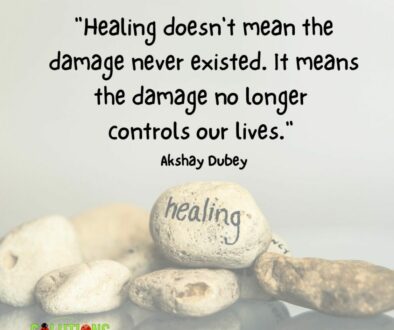What You Can Do about PTSD and Suicide

The reports of six Canadian veterans, including the death of twenty year old, Leona MacEachern of suicide, deeply troubled me. The media surmised that their despair was caused by Post Traumatic Stress Disorder (PTSD), which was caused by experiencing the horror of military service. PSTD and suicide are often paired; too often!
PTSD and suicide are often paired because individuals suffering from PTSD can experience intense emotional and psychological distress that may lead to suicidal thoughts and behaviors. Several factors contribute to this association:
- Mental Health Struggles: PTSD is a mental health condition characterized by persistent and distressing symptoms that result from exposure to a traumatic event. These symptoms can include flashbacks, nightmares, severe anxiety, and depression. The emotional burden of living with these symptoms can become overwhelming.
- Reexperiencing Trauma: People with PTSD often reexperience the trauma in their thoughts, feelings, and memories. This constant reliving of the traumatic event can exacerbate emotional distress and feelings of hopelessness.
- Hyperarousal and Hypervigilance: Individuals with PTSD can be in a state of constant alertness, experiencing hypervigilance and heightened anxiety. This chronic state of agitation can lead to exhaustion and further contribute to emotional instability.
- Avoidance and Isolation: PTSD can lead to avoidance of people, places, or situations that trigger traumatic memories. This social withdrawal can lead to feelings of loneliness and isolation, which are risk factors for suicidal ideation.
- Substance Abuse: Some individuals with PTSD turn to drugs or alcohol as a way to self-medicate and cope with their symptoms. Substance abuse can exacerbate mental health issues and increase the risk of suicidal thoughts and actions.
- Feelings of Guilt and Shame: Survivors of trauma often struggle with feelings of guilt or shame, even if they were not at fault for the traumatic event. These feelings can erode self-esteem and contribute to thoughts of worthlessness.
- Lack of Coping Mechanisms: People with PTSD may lack effective coping mechanisms to manage their distressing symptoms. This can make it difficult for them to find healthy ways to deal with their emotions and trauma-related triggers.
- Difficulty Seeking Help: Stigma surrounding mental health issues and a reluctance to seek help can prevent individuals with PTSD from accessing the support and treatment they need. This delay in seeking treatment can worsen their condition.
- Feeling Trapped: Some individuals with PTSD may feel trapped by their symptoms and the trauma they have experienced. They may perceive suicide as the only way to escape their emotional pain.
- Comorbidity: PTSD often co-occurs with other mental health conditions, such as depression and anxiety disorders. The presence of multiple mental health disorders can increase the risk of suicide.
Child of a Veteran
As a child of a war veteran, I experienced some of the aftermath of war. My Dad, Ted McLaughlin served in WWII, came home, married his pre-war sweetheart, and fathered four children. I am the oldest. Dad never spoke of the war until his senior years. But our growing years were terrorized by his nightmare screams, anger outbursts, and physical smacks, whacks, and kicks.
Our aunts and uncles would whisper, “It’s because he was in the war, you know.” All I knew was that I wanted to leave home and did so at 19-years-old. But as I matured, learned, and healed some of my own drama, I developed compassion for Dad. I became convinced he had undiagnosed PTSD. Back in the 1950s and 1960s no one ever thought of therapy or recovery, even if it existed.
My mother and our whole family had no idea how to respond to my father’s out-of-control behavior. As far as we know, Dad never had ideas of suicide.
If your loved one’s PTSD is creating suicidal ideation, please take action.
What to Do if You Suspect Suicide
If you suspect your loved one is considering suicide here are some basic help steps:
- If they say they are thinking of suicide. Believe them. Do not take chances.
- If you are suspect of suicide, ask! Yes, ask, “Are you thinking of killing yourself?”
- Ask, “How are you planning to do it?” It is a warning signal if the details and the means are in place. Assess if you need to intervene. Again, don’t take chances if you fear danger, call 911!
- Regardless the initial conversation, reach out to access professional help.
Good News
Today’s good news is that we know much more about the management of extreme stress, anxiety, and PTSD. EMDR was developed by Francine Shapiro who while working with American veterans discovered how she could collapse the highly emotional reaction to triggers created during trauma inducing incidents. EMDR has also been proven to be effective with those suffering from car accidents, childhood abuse, bullying, anxiety and phobias. As an EMDR practitioner, I have seen first anxiety and trauma calm.
A few years ago a representative from Veterans Affairs called me to ask permission to use my 25 question quiz, Score Your Resilience. Of course, I said yes.
Veterans Affairs Canada
Regrettably, my understanding from media reports is that Veterans Affairs Canada does not have adequate resources for those who require treatment. Why our government is not more readily responding to the crisis is baffling. But, as described above, there are options and possibilities.
Veterans Affairs has a list of resources, mostly information, on its website. For those who want to become more informed it includes how to provide suicide prevention, a free Wellness Kit, and information on Post-Traumatic Stress Disorder.
Reach Out
It’s crucial to recognize the signs of PTSD and suicidal ideation and to provide appropriate support and resources to individuals who may be struggling. Timely intervention, therapy, and treatment can significantly reduce the risk of suicide among those with PTSD. If you or someone you know is experiencing suicidal thoughts, it’s important to seek help immediately from a mental health professional or a local crisis distress line. In Calgary, Alberta it is 403-266-4357.
Please check out these related posts:
- Book Summary: Getting Past Your Past: Take Control of Your Life with Self-Help Techniques from EMDR
- Book Summary: Return to Center: Simple Strategies to Navigate Distress, Depression, and Disconnection
![]()




February 15, 2014 @ 11:09 am
Hi Pierrette,
Thank you for the acknowledgement and question. I subscribe to Psychology Today. They also have an information rich website. At this link you will find a wealth of information about narcissism including a quiz–http://www.psychologytoday.com/basics/narcissism.
A thought for you: Please avoid putting out an inappropriate amount of energy and focus on trying to figure out or change that person you (or your friend) are “living with.” Rather, ask yourself some important questions to determine your own future.
Am I giving up the best of me to stay in this relationship? Have I tried all I can to make this relationship work? For example, have I followed the advise in Michele Weiner-Davis’ book, Divorce Busting? Would I be more successful and happier outside of the relationship? Am I using this relationship as an excuse to not get on with my life? Do I really get it that the only person I control and can change is ME?
All the best with your exploration of other . . . and self! Let me know if I can be of any other help. OK?